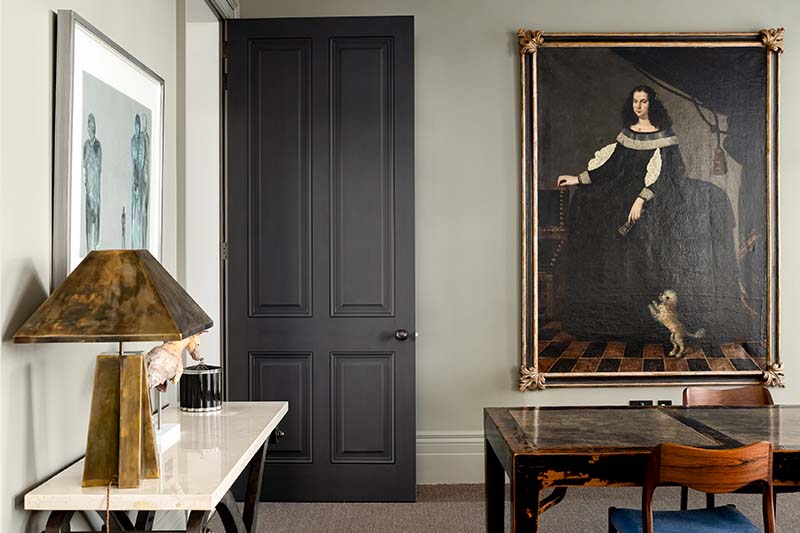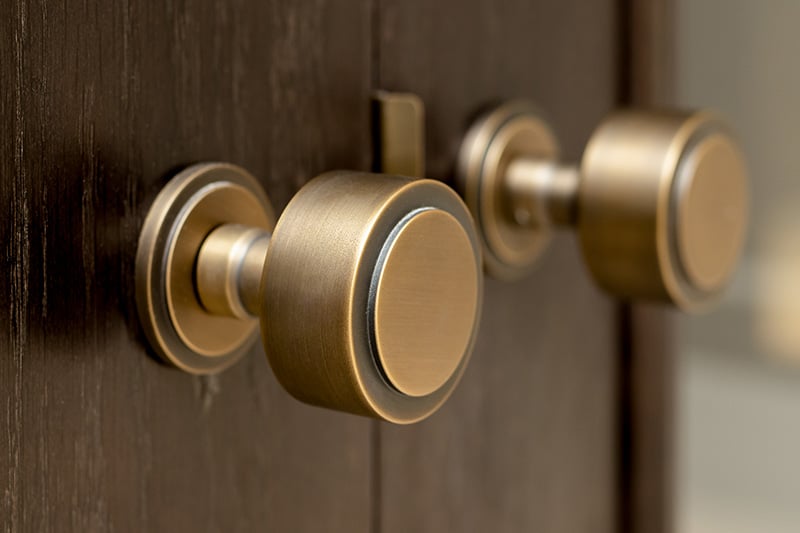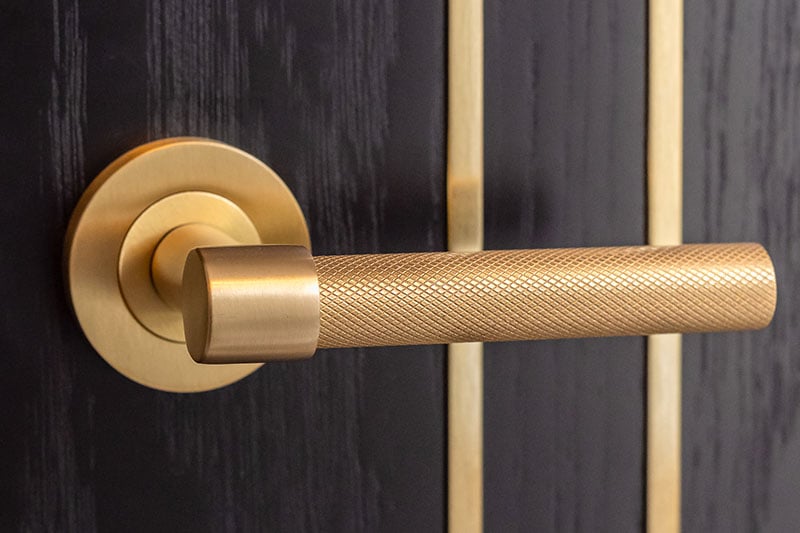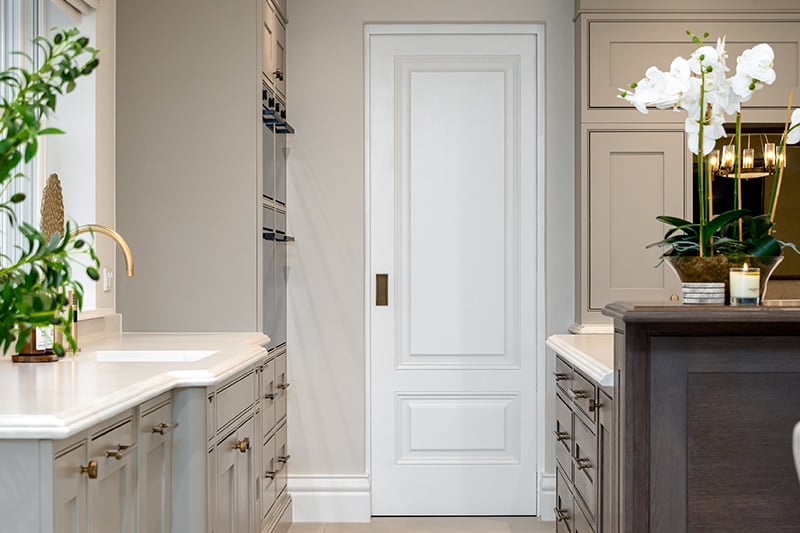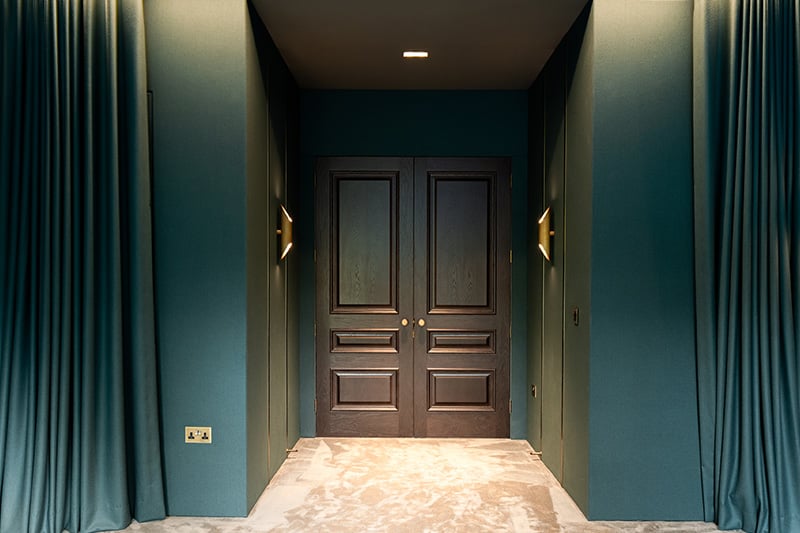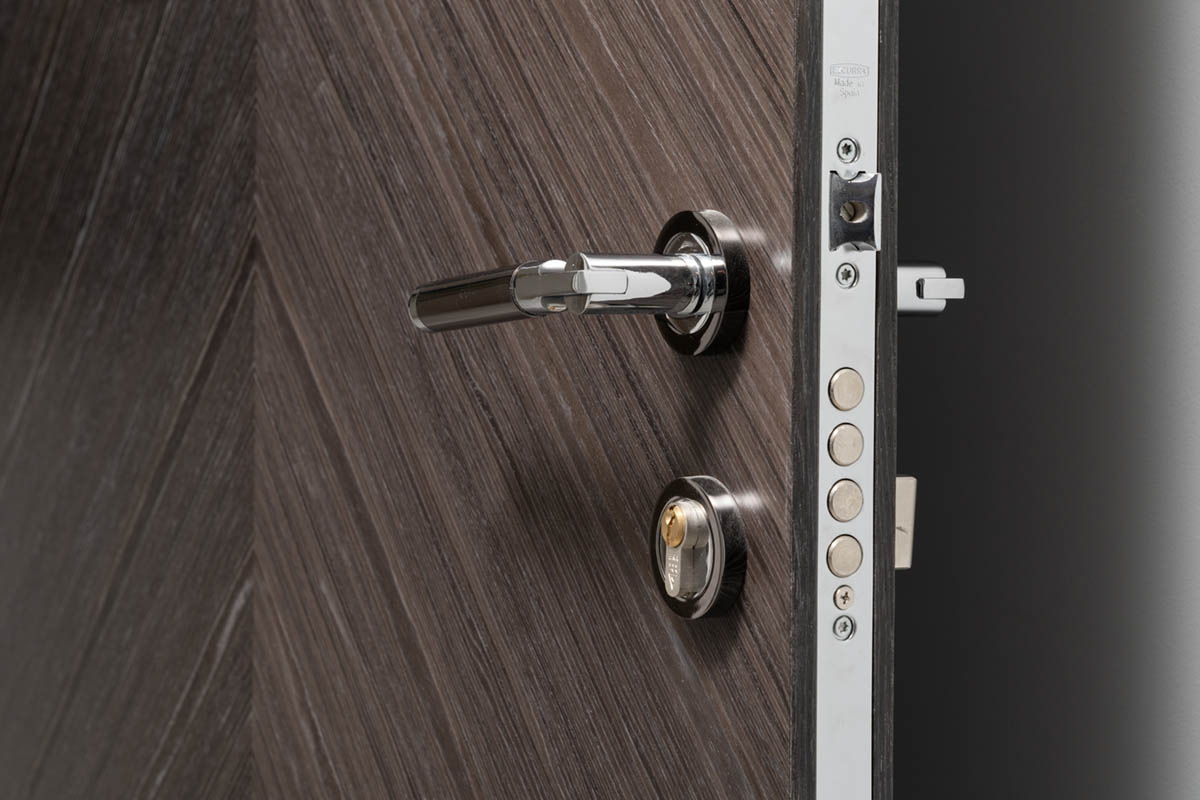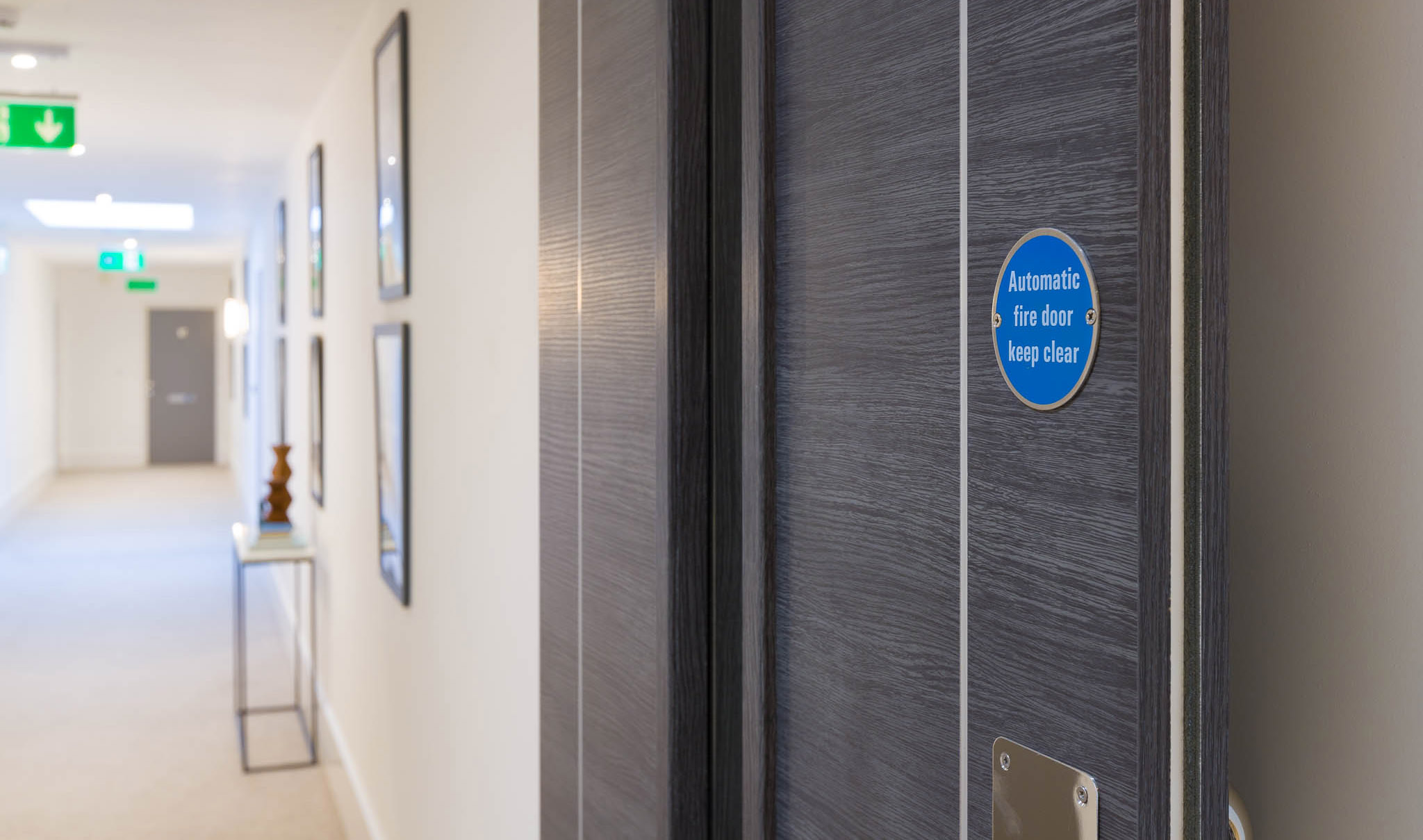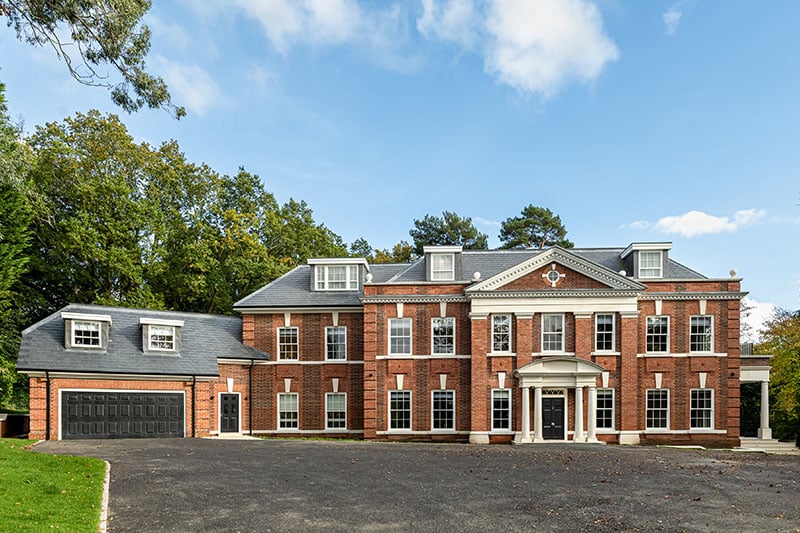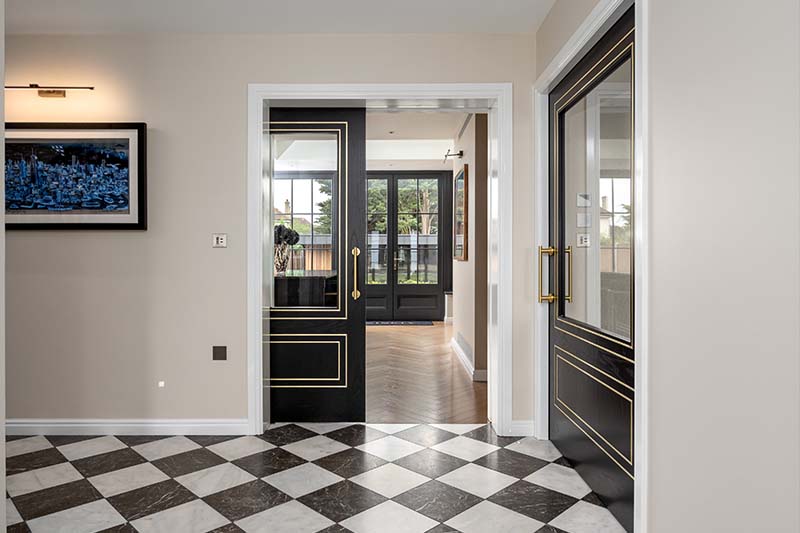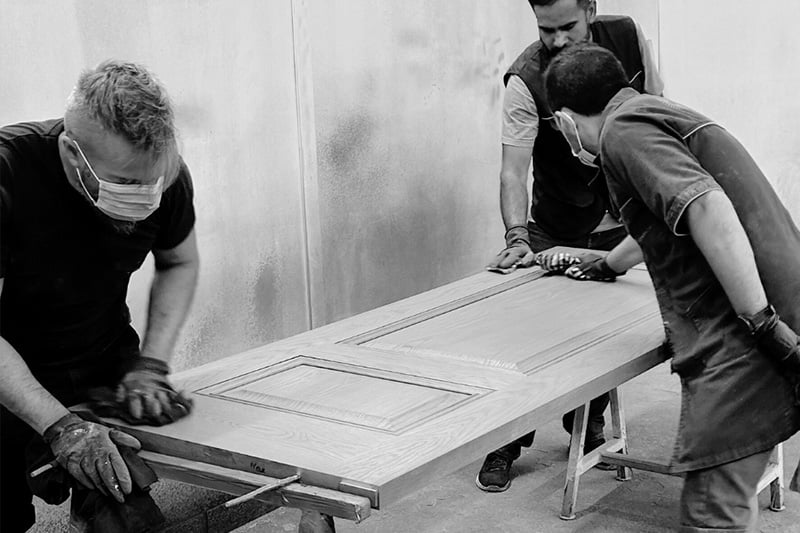Specifying Bespoke Pocket Doors and Ironmongery

Author: Cullen Wylie
Pocket doors are becoming increasingly popular due to their varied applications. While they can be used anywhere in a property, the applications I see most often are to maximise space, particularly in smaller rooms where a hinged door would limit the use of the room.
Some of the best uses I’ve seen are dressing rooms, boot rooms, and studies where hinged doors would block access to the fittings or furniture in the room .
They are also excellent for layouts that need to maintain a flow between spaces; I particularly like the use of pocket doors between reception and dining rooms, allowing for an open feel but making it easy and quick to separate and define the spaces when needed.
How do I specify pocket doors?
There are six things to consider when specifying pocket doors, which are:
- The door design, including the veneer and stain (if it is not already chosen)
- The pocket door system (if it has not already been chosen)
- Cost implications: pocket doors are more expensive than hinged doors, typically around three times the cost of a hinged door
- The suitability of the door model and the bead detail, making sure there is no protruding bead so it fits into the pocket and doesn’t prevent a fire seal when closed
- Check if there any fire rating requirements
- Select flush pulls and ironmongery
What pocket door designs are available?
Pocket doors can be made with a range of designs and materials, there are not as many limits as you might think. At Denleigh, we can provide pocket doors in modern designs, and we can use inlays to create custom designs in the same way as our hinged doors. We can also provide lattice and steel-framed doors, so you are not limited to solid and timber options.
Beyond the materials, there are also additional options for finishes to suit the project. For example, panelled or flush pocket doors can be manufactured as a glazed variant if the space requires a lot of light, and mirrors can be applied to either side of a panelled door or flush pocket door to make spaces seem larger.
An important part of a high quality appearance is making sure the doors look level and symmetrical when closed, so we adjust the stiles and jambs so the door has a perfect appearance.
How can I ensure a high-quality appearance pocket door?
The hardware used on the door can also make or break the final appearance.
There are various types and finishes of handles available, and flush pull are an excellent choice for pocket doors. For spaces that need controlled access, such as bathrooms or dressing rooms, flush pulls with turn-and-release allow the doors to be locked together.
I would always recommend using an edge pull on the leading edge of a door, as these can keep a flat profile when not in use but provide something that can be easily grabbed when the door needs to be opened, which is particularly useful for heavier doors.
Speaking of locks, there are various options as well. Bathroom, key, and euro locks are all compatible with pocket doors.
Recommendations
The most common mistake with pocket doors is the bead detail, so pay particular attention to this part. Projecting bead will hit the frame and cause issues with opening and closing the doors, so recessed beading is a must on pocket doors.
Aesthetically you have a choice to make. Either use standard projecting bead throughout the project with recessed bead just on pocket doors; or used recessed bead throughout the project for consistency.
Finally use a specialist door manufacturer so your pocket doors can have bespoke margins for consistent appearance throughout project.
If you have any questions, get in touch on 01722 337060 or email me at cullen.wylie@denleigh.co.uk.
- In June 2024, we did a webinar covering specification advice for pocket doors, which can be viewed on our website.
- If you would like more information on specifying pocket door kits, here's a blog post that will help.
Download our Pocket Door Specification Guide:
